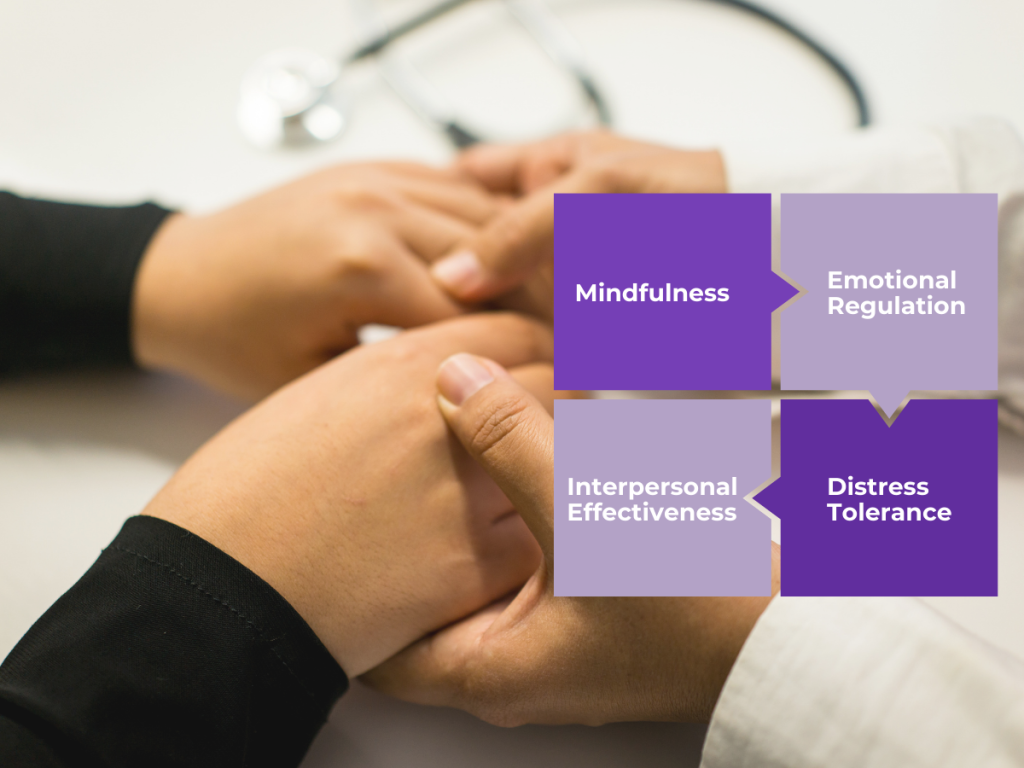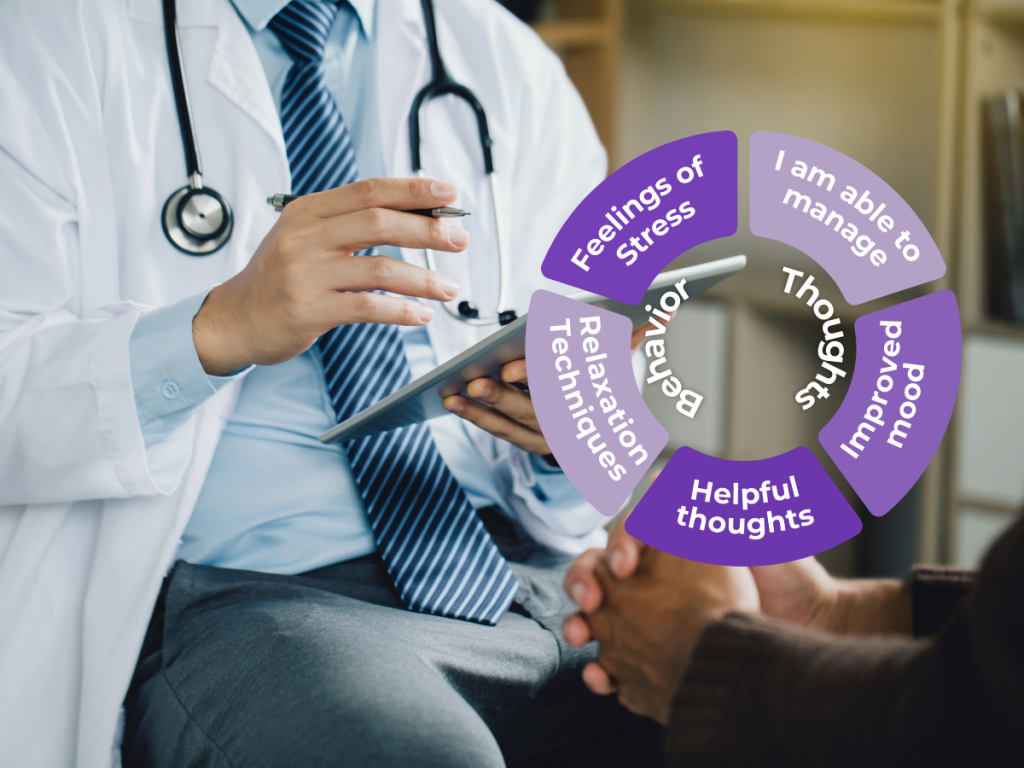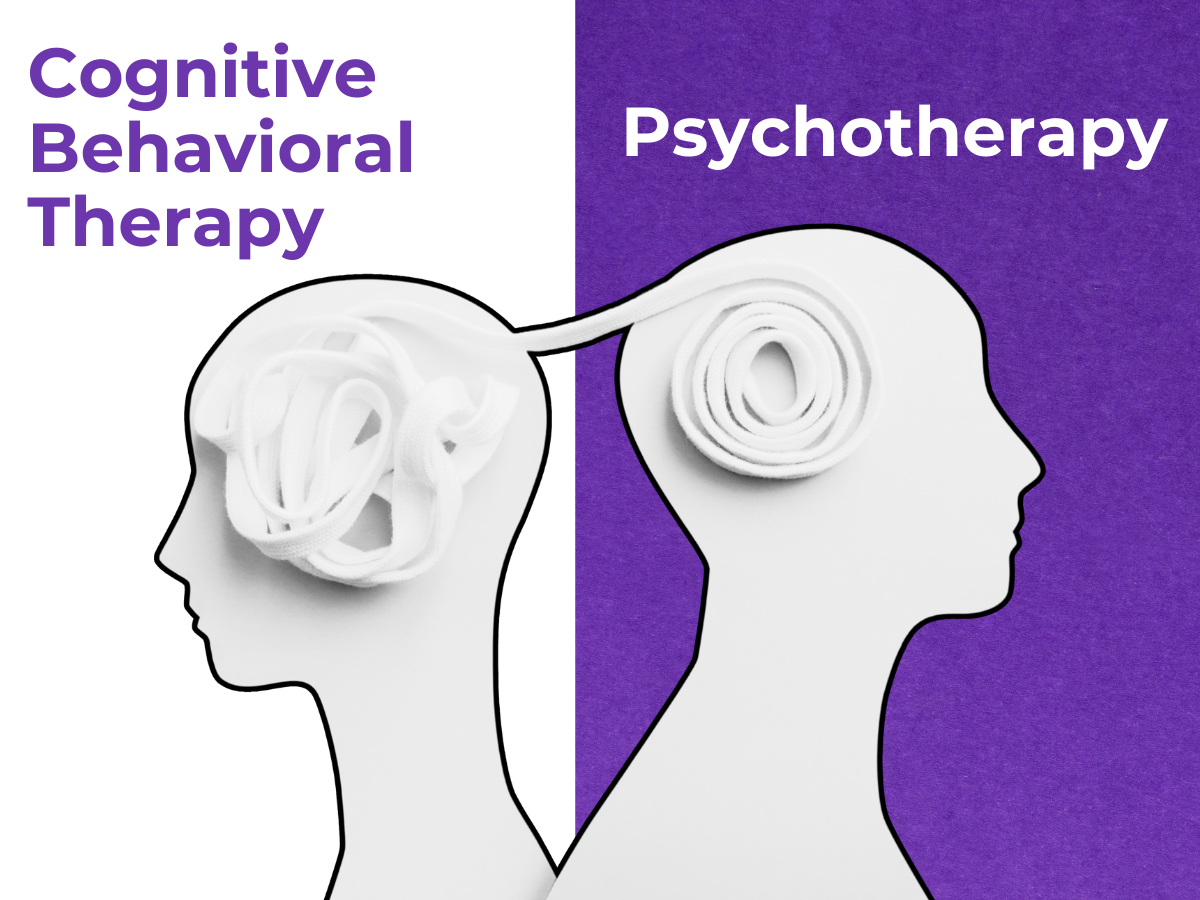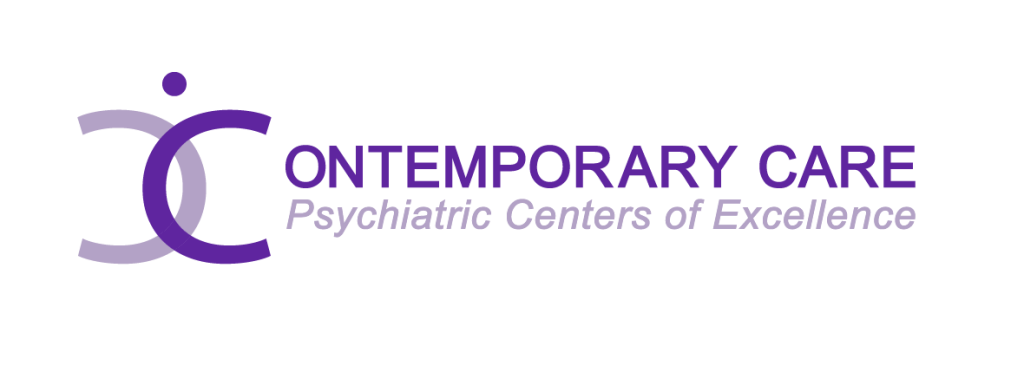Psychotherapy, often known as “talk therapy”, holds a range of mental health treatment approaches that aim to foster dialogues between a therapist and a client to know about various aspects of the client’s life, his/her thoughts, emotions, and experiences. While on the other hand, Cognitive Behavioral Therapy (CBT) is a form of psychotherapy but is used in different ways with different approaches. In this blog, we’ll delve into these two terms and observe cognitive behavioral therapy vs psychotherapy and how efficient both are in treating patients.
What is Psychotherapy?
Traditional psychotherapy, portrayed in society as a patient talking with a specialist about their past lying on a lounge chair, includes different treatment strategies under the umbrella of talk treatment, known as interpersonal therapy. These therapy sessions urge patients to talk about their background, the difficulties they face, and the expected sources of those difficulties. Examples of Traditional psychotherapy incorporate psychodynamic treatment, relational psychotherapy (IPT), supportive psychotherapy, family treatment, and couple’s treatment.
Psychodynamic therapy, among the most established and most settled types of current-day psychotherapy, centers around unconscious processes impacting a patient’s way of behaving, considerations, and activity to treat mental health issues. Although frequently connected with Freudian analysis, contemporary psychodynamic treatment fluctuates in its methodology from one specialist to another. It resolves issues, for example, depression, anxiety, panic disorders, PTSD, physical symptoms, and personality disorders.
Therapeutic Techniques of Traditional Psychotherapy
Traditional psychotherapy utilizes therapeutic strategies for helpful relationships as the essential method for facilitating healing and growth. These methods encourage a steady climate where clients can explore their considerations, feelings, and encounters in a safe and non-critical space. Here are a few key methods normally used in traditional psychotherapy:
Individual-centered focus: In this type of therapy, every meeting rotates around the client’s necessities and preferences rather than the therapist’s agenda. This approach engages clients to play a functioning role in their healing journey, permitting them to recognize and focus on points they wish to explore during meetings.
Unconditional Positive Regard: Central to traditional psychotherapy is the concept of unrestricted positive regard, wherein the therapist shows constant and complete acceptance for the client, no matter what their thoughts, sentiments, or ways of behaving. This unconditional help assists clients with feeling esteemed and approved, cultivating a feeling that everything is safe and secure in the therapeutic relationship.
Collaboration: Traditional psychotherapy accentuates cooperation between the client and therapist. Rather than the specialist holding every one of the responses, both cooperate to explore previous encounters, current ways of behaving, and challenges. This cooperative methodology advances a feeling of pride and strengthening for the client, empowering dynamic commitment to the helpful process.
Therapeutic Trust: Trust shapes the foundation of the therapeutic bond in traditional psychotherapy. Clients should feel good and secure so they open up to the specialist about their encounters and feelings. Through reliable support and empathy, therapists assist clients with developing trust, empowering them to dive into more profound parts of their minds and connections.
Active Listening and Validation: Successful communication in traditional psychotherapy includes undivided attention, wherein the therapist clearly understands the client’s words, feelings, and non-verbal communication. Therapists acknowledge the client’s thoughts and feelings through undivided attention without judgment. This support encourages a deeper understanding of oneself and advances self-reflection and growth.
What to Expect from Traditional Psychotherapy
In the traditional psychotherapy session, clients can expect a strong environment where they lead the conversation, deciding the subjects, pacing, and profundity of exploring. Here’s what typically happens during such sessions:
Presenting the Meeting Topic: The session generally starts with the client identifying the main focus of the discussion. Sometimes, the therapist takes out some main points from the previous session to guide the conversation.-
Handling and Exploring: When the point is laid out, both the patient and therapist explore that specific issue. The client might communicate what the issue means for their life and work, while the specialist asks clarifying questions to help gain insight. Conversations might address different occasions connected with the fundamental point, allowing the client to consider the broader implications.
Integration: Towards the end of the session, the client and therapist think about the experiences acquired and handling done during the meeting. They look at the implications of this new understanding and how it may be incorporated into the client’s life pushing ahead. Adapting abilities might be surveyed to assist the client with dealing with the recently discovered knowledge until the next session.
In a nutshell, this type of therapy provides a clear pace for the patients to feel free when letting out all that’s in their head, and the therapist becomes more like a friend who understands everything, comforts and provides ideas to help him/her out.
Efficacy of DBT: Cognitive Behavioral Therapy vs Psychotherapy

The efficiency of conventional psychotherapy, compared with other psychological wellness treatment modalities like prescription or Dialectical Behavior Therapy (DBT), is fundamental to consider in tending to the rising emotional well-being requirements of people, especially grown-ups and youngsters
As indicated by insights from 2020, just a small part of grown-ups, roughly 10.1%, got guidance or treatment from mental health professionals in the previous year. This shows a gap in getting psychological well-being treatment despite the massive increase in psychological issues worldwide. Besides, women were more likely than men to look for psychological treatment, suggesting expected boundaries to access faced by certain demographics.
Also, among teens, roughly 17% got treatment from psychological professionals through the years. However, somewhere in the range between 2009 and 2019, feelings of bitterness and sadness among high schoolers expanded by around 40%. Despite this alarming situation, just a minority of teens, around 10% of young men and 7% of girls, turned to medication for mental health concerns.
These statistics highlight the desperate need for efficient mental health medications to work as a good exposure and response prevention for patients, including traditional psychotherapy, to address the rising prevalence of psychological well-being issues among both adults and teens
What Is Cognitive Behavioral Therapy?

Cognitive Behavioral Therapy (CBT) remains a sturdy foundation among all the therapeutic approaches, known for its efficacy in tending to different psychological problems by focusing on the interplay between considerations, feelings, and behaviors. CBT has developed into a flexible treatment approach relevant to a range of mental issues including post-traumatic stress disorder, obsessive-compulsive disorder, anxiety disorders, and even eating disorders
CBT works on the reason that altering maladaptive thought patterns can bring positive changes in temperament and behavior, this helps to make the patient feel better and less upset. Unlike traditional psychotherapy, CBT is portrayed by its brief and organized nature, often yielding great outcomes in a very short period.
Inside the domain of CBT, a few variations have emerged, each fitted to address specific therapeutic objectives and client needs.
- Mindfulness-based Cognitive Therapy (MBCT): MBCT brings careful practices into the CBT structure, stressing the development of awareness and acceptance of twisted thoughts without judging or adjusting them directly. By encouraging mindfulness, people foster a non-critical position towards their viewpoints and feelings, promoting flexibility and emotional guidelines.
- Dialectical Behavior Therapy (DBT): DBT, introduced by Marsha Linehan, centers around improving guidelines and interpersonal effectiveness, especially in people with borderline personality disorder (BPD) and related conditions. Emphasizing skills training and validation, DBT provides clients with strategies to identify and endure emotional distress, using adaptable survival strategies and relational abilities.
- Acceptance and Commitment Therapy (ACT): ACT incorporates mindful standards with behavioral strategies to advance mental adaptability and values-driven action. Through fostering knowledge of internal experiences and adjusting behavior with personal values, ACT engages people to rise above mental problems and live more satisfying lives.
- Rational Emotive Behavior Therapy (REBT): REBT, developed by Albert Ellis, uses a practical and simple method to challenge unhelpful thoughts and behaviors. Through procedures, for example, rational examination, role-playing, and exposure-based practices, REBT urges clients to face and reevaluate their broken thoughts, encouraging strength and different methods for dealing with tough times.
Therapeutic Techniques of CBT vs Psychotherapy
Cognitive Behavioral Therapy (CBT)is an organized, objective-based therapeutic approach intended to alleviate distress by changing stressful thought patterns and behaviors. It includes a few key parts focused on long-term symptom management and relief. The three elements of CBT treatment involve psychoeducation, cognitive restructuring, and developing coping skills:
Psychoeducation:
Psychoeducation in CBT provides clients with information and assets about their diagnoses and side effects, assisting them with understanding the basic reasons for stress. This figuring out encourages knowledge, standardizes sentiments, and validates struggle, keeping clients part in therapy and engaging them for powerful treatment.
Cognitive Restructuring:
Mental rebuilding is a basic part of Cognitive Behavioral Therapy (CBT), aimed toward addressing unhelpful thoughts that contribute to emotional distress. This process includes identifying the negative thoughts, investigating their distortion, and replacing them with more realistic alternatives. By this approach, clients can enhance their prosperity and lessen emotional stress.
Identifying Underlying Beliefs:
In Cognitive Behavioral Therapy (CBT), it’s necessary to figure out and deal with beliefs deep down inside us. This helps in getting better results from our treatment. Our beliefs about ourselves and the world can make people think negatively. But in therapy, patients can change these unhelpful beliefs, like thinking they’re not good enough. It’s known as one of the best mindful and meditative practices. By doing this, clients can feel better and deal with tough times more easily.
Coping Skills Development:
Learning how to handle tough situations is important in therapy. CBT teaches people useful ways to deal with stress and bad feelings. By picking up skills like problem-solving, calming down methods, and relaxation techniques, people become stronger and handle their emotions better. These coping skills help them feel better day-to-day and keep making progress even when therapy isn’t happening.
What to Expect in a CBT Session
In a Cognitive Behavioral Therapy (CBT) session, clients can expect a structured and goal-oriented approach designed to address specific distressing thoughts and behaviors. Unlike other therapeutic approaches, CBT sessions typically adhere to a clear protocol, providing a roadmap from the beginning to the end of treatment.
Structure:
- It is the most essential part of CBT sessions.
- Therapists outline the process at the start of treatment, ensuring clarity and understanding for the client.
- Each session focuses on the specific thoughts and behaviors causing distress, whether it involves psychoeducation, mental rebuilding, or growing new adapting abilities.
Present-focused attention:
- While some exploration of basic convictions may occur, the main emphasis is on understanding what current side effects and behavior mean for the client’s routine.
- This approach assists clients with acquiring knowledge about their initial challenges and enables them to roll out significant improvements.
Homework assignments:
- Play a crucial role in traditional CBT.
- Toward the end of every session, the therapist assigns homework specific to the client’s treatment goals.
- These tasks effectively build up learning and practice outside the treatment process, assisting clients with coordinating new ways of behaving and thinking designs into their day-to-day routines.
- By participating in homework, clients can foster long-term habits that replace pointless thoughts and behaviors.
Efficacy of CBT in the Comparison between Cognitive Behavioral Therapy vs Psychotherapy
Cognitive Behavioral Therapy (CBT) has demonstrated notable efficiency in treating various mental health conditions, particularly depression and mental health disorders, as evidenced by research findings. Studies have shown that CBT exhibits significant effectiveness compared to counseling, particularly when conducted over a specific number of sessions.
According to research, CBT showed significant superiority over counseling when patients underwent either 18 or 20 sessions. In these cases, the recovery rates for CBT were outstandingly higher, with percentages ranging from 62.2% to 62.4%. In contrast, counseling showed lower recovery rates, ranging from 42.6% to 44.4%. This indicates that CBT, when used over a specific duration, provides more favorable outcomes compared to counseling.
There’s enough evidence that CBT works well in making tough feelings better, both right after treatment and in the latter assessments. Also, when CBT is used to prevent problems before they start, there’s a big drop, about 63%, in the chances of someone feeling down in the future. This means CBT not only helps with current feelings but also stops them from coming back later.
Certain components of CBT have been identified as contributing to its efficacy as response prevention. For instance, CBT interventions incorporating behavioral activation and cognitive restructuring, particularly in youth, have demonstrated better long-term outcomes.
Additionally, involving caregivers in the therapeutic process has been associated with improved treatment effectiveness for youth undergoing CBT.
Comparison Between CBT vs Psychotherapy
- Length of Treatment
- CBT: Generally time-limited, lasting up to 6 months or as short as 12 weeks.
- Psychotherapy: No set duration; can last for years, depending on the complexity of issues and client progress.
- Structure within Sessions
- CBT: Sessions follow a structured format including psychoeducation, identifying/challenging cognitive distortions, and practicing new skills.
- Psychotherapy: Sessions are client-led, focusing on stressors chosen by the client, expanding understanding, and planning forward.
- Focus of the Sessions
- CBT: Concentrates on specific behaviors or symptoms causing distress, stays in the present, and avoids exploring unrelated stressors.
- Psychotherapy: Considers all aspects of the client’s life, including past trauma, current behaviors, and future considerations. Clients decide on session focus.
- Work Outside of Sessions
- CBT: Often includes homework assignments to build new habits and maintain progress.
- Psychotherapy: Homework may be included, but not relied upon as a core aspect of treatment progression.
- Pacing of Topic Processing
- CBT: Moves through topics efficiently within the time-limited framework, focusing on demonstrating proficiency before moving on.
- Psychotherapy: Allows clients to dictate the pace of processing, staying on a topic until the client feels fully understood and processed.

If you are looking to find some better advice on psychological therapy, visit http://contemporarycarecenters.com/ for more information on how you can be able to maintain better mental health along with living your life, free from mental problems. Contemporary Care provides you with all kinds of mental therapy based on the mental problems you might have in your life. It has all kinds of solutions to your problem while being able to help you go through the blatant mental issues that keep you from living to the fullest.



